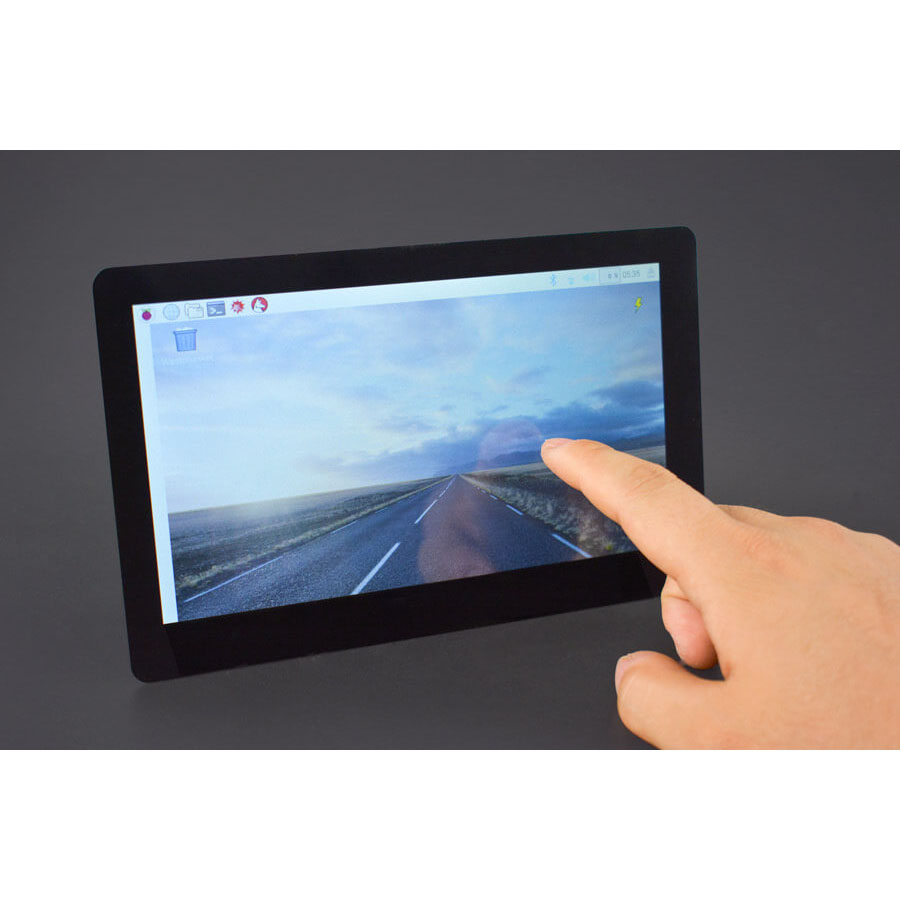What Makes HDMI LCD Displays the Future of Visual Technology?
2025-11-12
An HDMI LCD Display refers to a liquid crystal display that uses High-Definition Multimedia Interface (HDMI) as its main input connection. This technology allows for high-quality digital transmission of both video and audio signals through a single cable, ensuring superior image clarity and color accuracy. HDMI LCD displays have become an indispensable component across industries—from consumer electronics and automotive systems to medical instruments and industrial monitoring panels—thanks to their reliability and compatibility.
The fundamental structure of an HDMI LCD display includes the liquid crystal panel, LED backlight, control driver board, and HDMI input interface. Together, these components deliver real-time, high-resolution visual output with excellent signal stability.
The key purpose of this article is to explore the advantages, functionalities, and future development trends of HDMI LCD displays, highlighting how this technology continues to redefine digital visualization.
Main Product Parameters of HDMI LCD Display
| Parameter | Specification |
|---|---|
| Display Size | 5" – 27" (customizable) |
| Resolution | 800×480 to 1920×1080 (Full HD) |
| Brightness | 250 – 1000 cd/m² |
| Interface | HDMI 1.4 / HDMI 2.0 / HDMI 2.1 |
| Contrast Ratio | 800:1 to 1500:1 |
| Viewing Angle | 80°/80°/80°/80° |
| Response Time | 5–10 ms |
| Operating Temperature | -20°C to +70°C |
| Touch Function | Optional Capacitive or Resistive Touch |
| Backlight Type | LED Backlight |
| Power Supply | DC 5V–12V |
These specifications reveal the flexibility and durability of HDMI LCD displays, making them suitable for a wide variety of applications, from industrial automation panels and medical imaging systems to interactive kiosks and home entertainment displays.
Why Are HDMI LCD Displays So Widely Preferred in Different Industries?
The popularity of HDMI LCD displays is not coincidental. Their wide adoption is driven by several technological, aesthetic, and functional advantages that outperform older connection types such as VGA or DVI.
(1) Superior Image Quality
HDMI LCD displays support uncompressed digital signals, maintaining full image resolution and color depth. Unlike analog formats, HDMI eliminates signal degradation, resulting insharper images and vibrant color reproduction suitable for professional-grade visual applications.
(2) Simple Connectivity
The single-cable HDMI interface simplifies the connection process by transmitting both audio and video signals simultaneously. This reduces wiring complexity and makes installation cleaner and faster.
(3) Broad Compatibility
HDMI interfaces are compatible with most modern multimedia devices—computers, gaming consoles, cameras, industrial control boards, and embedded systems. This makes HDMI LCD displays a versatile choice for both consumer and industrial electronics.
(4) Energy Efficiency
Modern HDMI LCD displays utilize LED backlighting, which not only provides bright and uniform illumination but also significantly reduces power consumption. This makes them ideal for 24-hour operation environments such as security monitoring centers.
(5) Enhanced Durability and Customization
With wide temperature tolerance and optional touch functionality, HDMI LCD displays are well-suited for outdoor and industrial applications. Manufacturers can customize display size, brightness, and resolution to meet specific operational needs.
(6) High Reliability in Data Transmission
HDMI connections ensure lossless data transfer, supporting resolutions up to 4K and beyond with zero flicker or latency. For sectors requiring precision visualization—such as medical diagnostics or machine control—this feature is invaluable.
How Do HDMI LCD Displays Function and What Are Their Future Development Trends?
The working principle of an HDMI LCD display centers on the conversion of digital signals into pixel-level control through a driver board. When an HDMI source transmits a digital signal, the internal controller decodes the signal into RGB data. The liquid crystals then adjust their orientation based on electrical signals to allow varying light intensities, forming vivid, high-definition images on screen.
(1) Functional Highlights
-
Plug-and-Play Operation: Most HDMI LCD displays are automatically recognized by connected devices without additional drivers.
-
Multimedia Integration: They can support simultaneous audio output, making them convenient for integrated display systems.
-
Touch Capability: Capacitive touch panels enhance interactivity, particularly in POS systems, kiosks, and automotive dashboards.
-
Wide Viewing Angle Technology: Advanced IPS panels allow consistent image quality from all directions.
(2) Future Development Trends
-
Transition to 4K and 8K Resolutions
As consumer and industrial expectations for image precision rise, HDMI LCD displays are moving toward ultra-high-definition formats, supported by HDMI 2.1 standards that offer higher bandwidth and dynamic range. -
Integration with IoT and Smart Systems
The future of HDMI LCD displays lies in smart connectivity. These screens will integrate more closely with IoT devices, enabling real-time data visualization and remote control for automation and home systems. -
Flexible and Transparent Displays
Advances in materials science will introduce flexible and transparent HDMI LCD panels, enhancing design aesthetics for smart home appliances, automotive HUDs, and retail displays. -
Improved Power Management
Future HDMI LCD displays will adopt adaptive backlight technologies and low-power chipsets, further optimizing energy use and sustainability. -
Enhanced Industrial Adaptability
Manufacturers are focusing on ruggedized HDMI LCD displays with better moisture, dust, and impact resistance, meeting the growing demand in harsh industrial environments.
Common Questions About HDMI LCD Displays
Q1: What devices can be connected to an HDMI LCD display?
A1: HDMI LCD displays can connect to any device equipped with an HDMI output, including computers, Raspberry Pi boards, industrial control panels, digital cameras, game consoles, and media players. This versatility makes them suitable for both commercial and consumer use. The plug-and-play functionality ensures seamless operation without driver installation, while supporting multiple resolutions depending on the device’s output capability.
Q2: How to maintain and optimize the performance of an HDMI LCD display?
A2: Regular maintenance can significantly extend the display’s lifespan. It is recommended to clean the surface using a soft microfiber cloth, avoid exposing the display to direct sunlight or high humidity, and ensure adequate ventilation for heat dissipation. For long-term usage, users should avoid static images for extended periods to prevent image retention. Additionally, using high-quality HDMI cables can maintain signal integrity and reduce latency or flicker issues.
Conclusion: The Role of HDMI LCD Displays in Future Visual Innovation
HDMI LCD displays represent the pinnacle of modern visual technology, offering superior image transmission, outstanding reliability, and broad compatibility across multiple applications. As industries increasingly demand higher resolution, lower power consumption, and smarter integration, the evolution of HDMI LCD technology will continue to shape the landscape of digital visualization.
From industrial automation and automotive systems to consumer electronics and smart home devices, HDMI LCD displays are at the forefront of innovation. With ongoing advancements in resolution, display materials, and connectivity, they are expected to remain a cornerstone of visual communication for decades to come.
GuangDong RGB Optoelectronics Technology Co., Ltd. stands as a trusted manufacturer in this field, dedicated to delivering high-performance HDMI LCD displays that combine durability, precision, and design flexibility. The company continues to innovate with a focus on quality, customization, and energy efficiency to meet the ever-changing needs of global clients.
For more information about HDMI LCD displays or to discuss your specific display requirements, please contact us today.



